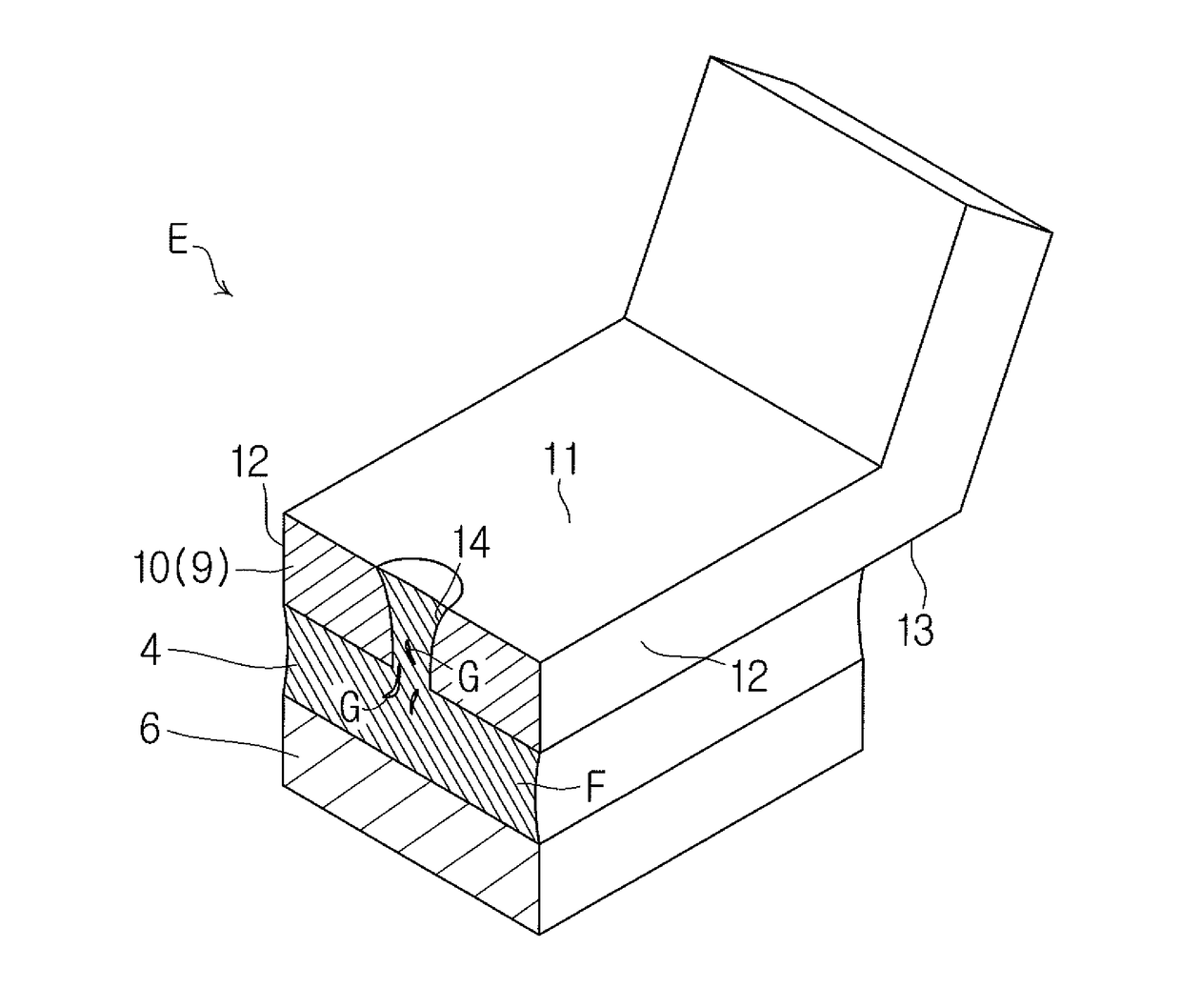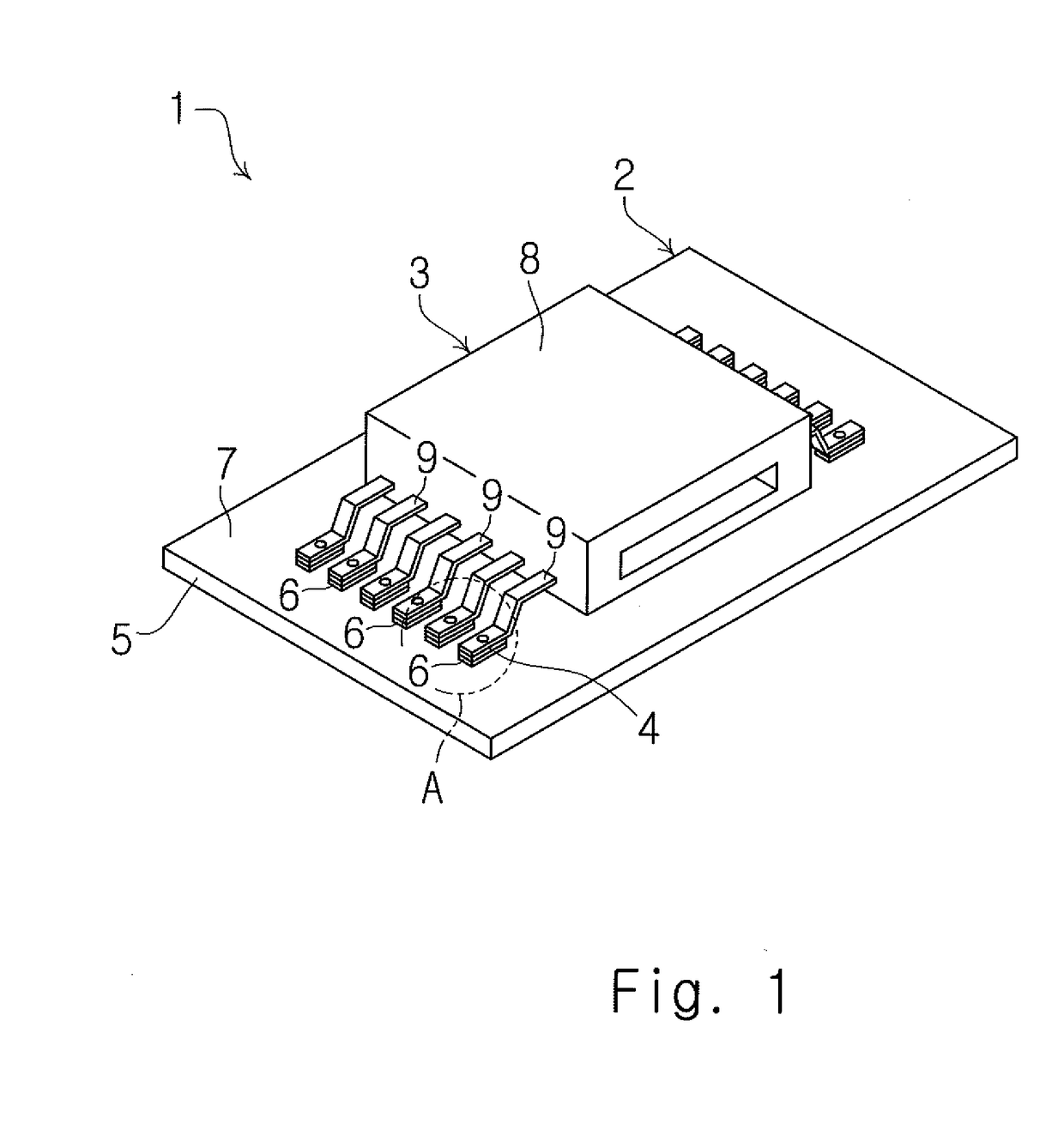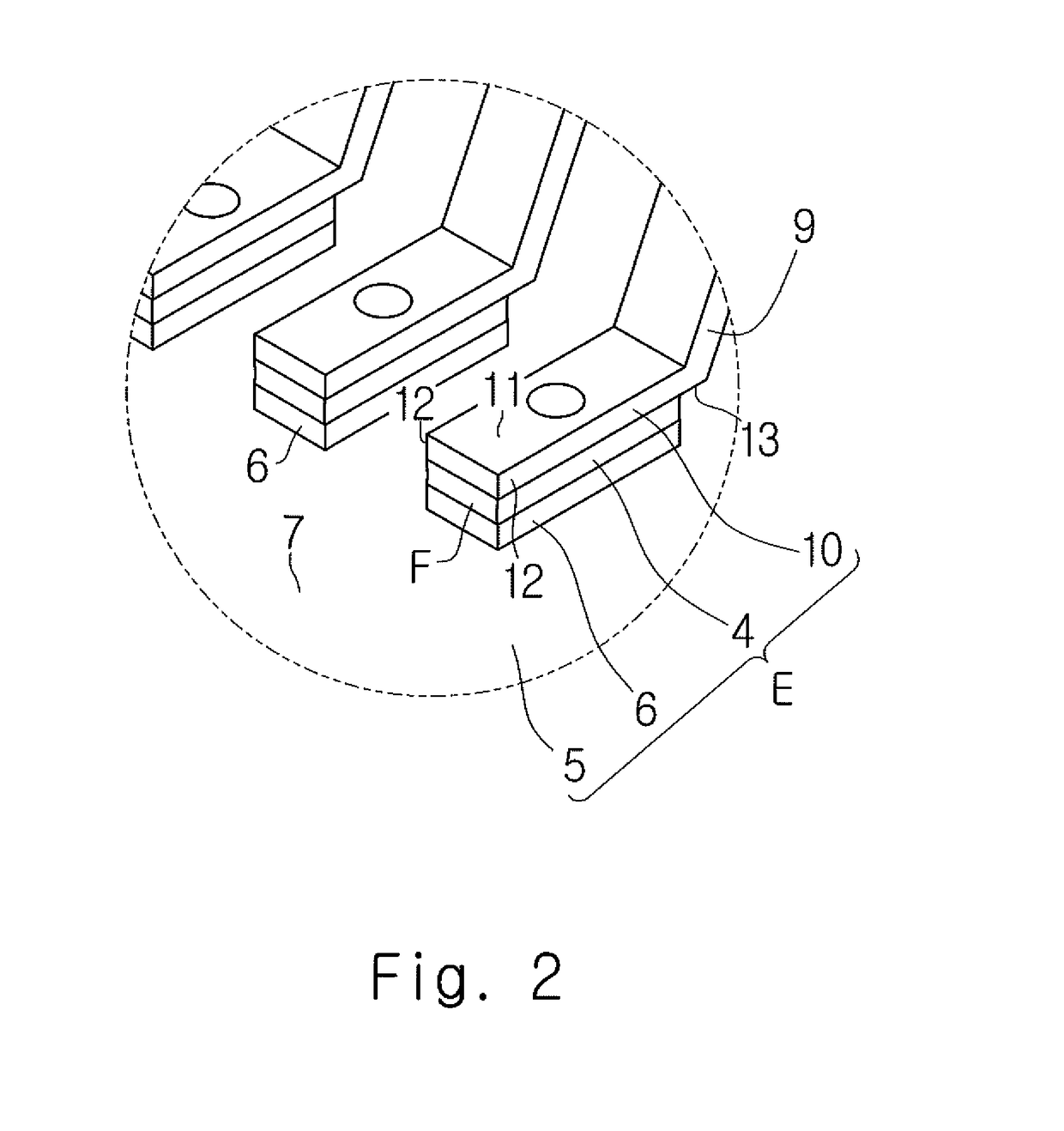Fixing structure and fixing method
a fixing structure and fixing method technology, applied in the direction of soldering apparatus, coupling device connection, manufacturing tools, etc., can solve the problem of difficulty in further and achieve the effect of reducing the irradiation time of laser beams per terminal
- Summary
- Abstract
- Description
- Claims
- Application Information
AI Technical Summary
Benefits of technology
Problems solved by technology
Method used
Image
Examples
first exemplary embodiment
[0051]A first exemplary embodiment will be described below with reference to FIGS. 1 to 4.
[0052]FIG. 1 is a perspective view of a circuit module 1. The circuit module 1 includes a circuit board 2, a connector 3 (electronic component), and an adhesive layer 4.
[0053]The circuit board 2 includes an insulating substrate (substrate) 5 and a plurality of conductive patterns 6. The insulating substrate 5 is formed of, for example, a glass epoxy resin or paper phenol. The plurality of conductive patterns 6 are formed on a connector mounting surface 7 of the insulating substrate 5. Each of the plurality of conductive patterns 6 is formed of, for example, a copper foil or aluminum foil.
[0054]The connector 3 includes a housing 8 and a plurality of terminals 9. The housing 8 is formed of an insulating resin. Each of the plurality of terminals 9 is formed of a Cu-based or Au-based metal. In the first exemplary embodiment, each of the plurality of terminals 9 is formed of a Cu-based metal and is ...
second exemplary embodiment
[0069]Next, a second exemplary embodiment will be described with reference to FIGS. 5 and 6. Differences between the first exemplary embodiment and the second embodiment will be mainly described, while a repeat of previous descriptions is omitted.
[0070]As shown in FIG. 3, in the first exemplary embodiment described above, the brazing filler metal F penetrates the terminal 9 and reaches the vicinity of the upper surface 11 of the fixed portion 10.
[0071]In contrast, in the second exemplary embodiment, as shown in FIGS. 5 and 6, the brazing filler metal F penetrates the terminal 9 and spreads over the upper surface 11 of the fixed portion 10 in a substantially circular shape. Specifically, as shown in FIG. 6, the brazing filler metal F spreads in a substantially circular shape to the outside of the upper opening 15 of the penetrating hole 14. The brazing filler metal F is deposited on the upper surface 11 of the fixed portion 10 at the outside of the upper opening 15 of the penetrating...
third exemplary embodiment
[0073]Next, a third exemplary embodiment will be described with reference to FIGS. 7 and 8. Differences between the first exemplary embodiment and the third embodiment will be mainly described, while a repeat of previous descriptions is omitted.
[0074]As shown in FIG. 3, in the first exemplary embodiment described above, the brazing filler metal F penetrates the terminal 9 and reaches the vicinity of the upper surface 11 of the fixed portion 10.
[0075]In contrast, in the third exemplary embodiment, as shown in FIGS. 7 and 8, the brazing filler metal F penetrates the terminal 9 and spreads over the upper surface 11 of the fixed portion 10 in a substantially circular shape. Specifically, as shown in FIG. 8, the brazing filler metal F spreads in a substantially circular shape to the outside of the upper opening 15 of the penetrating hole 14, and reaches the two side surfaces 12. The brazing filler metal F is deposited on the upper surface 11 and the two side surfaces 12 of the fixed port...
PUM
| Property | Measurement | Unit |
|---|---|---|
| zero cross time | aaaaa | aaaaa |
| wavelength | aaaaa | aaaaa |
| wavelength | aaaaa | aaaaa |
Abstract
Description
Claims
Application Information
 Login to View More
Login to View More - R&D
- Intellectual Property
- Life Sciences
- Materials
- Tech Scout
- Unparalleled Data Quality
- Higher Quality Content
- 60% Fewer Hallucinations
Browse by: Latest US Patents, China's latest patents, Technical Efficacy Thesaurus, Application Domain, Technology Topic, Popular Technical Reports.
© 2025 PatSnap. All rights reserved.Legal|Privacy policy|Modern Slavery Act Transparency Statement|Sitemap|About US| Contact US: help@patsnap.com



